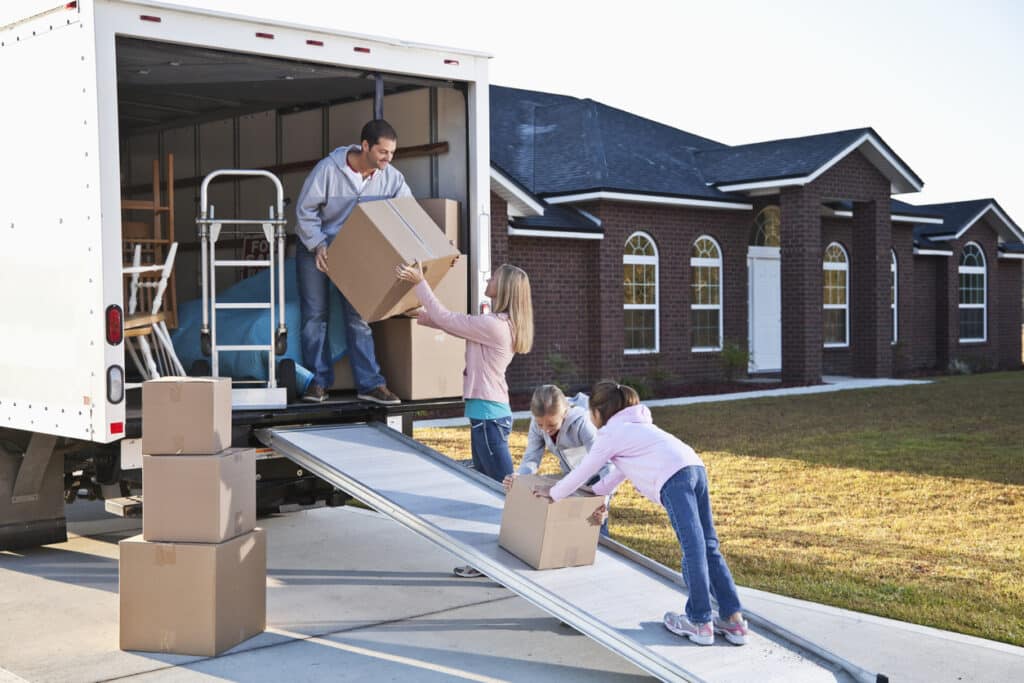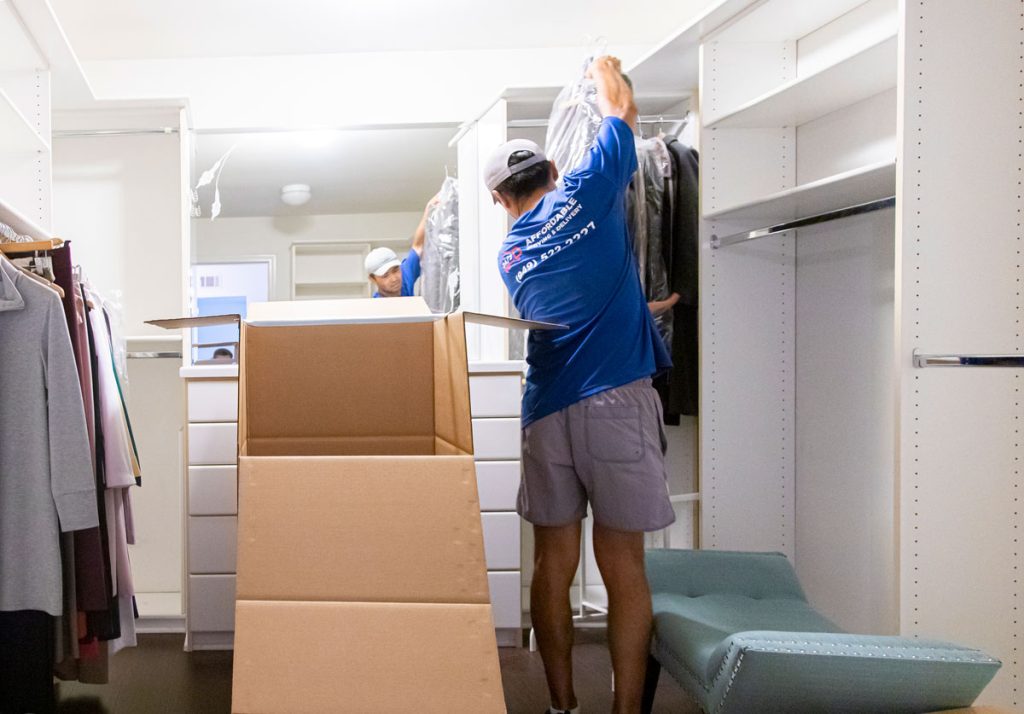How to Choose the Right Moving Supplies for Your Local Move

When moving locally, you cannot just put your things in a moving truck and start your journey. It is important to properly pack and prepare them before hitting the road. But how to choose the right packing supplies for moving? 24/7 Affordable Moving & Delivery has prepared some tips and tricks to help you.
Types of Packing Materials for Moving
Picture this: you’re an artist and your moving boxes are your canvas. But instead of paints and brushes, you’ve got a whole palette of packing supplies to work with. Each packing supply has a special role in making sure your belongings get to your new place in one piece. So, let’s explore this palette.
Cardboard Boxes
A cardboard box is one of the most essential packing supplies for moving. They come in all shapes and sizes, and picking the right ones can help you pack your belongings with ease:
- small boxes are perfect for heavy items like books or canned goods;
- medium boxes are used for most household items like toys, kitchenware, and smaller appliances;
- large boxes are best for lighter, bulky items like pillows, linens, and lamps.
Specialty boxes, like wardrobe boxes or dish packs, are ideal for awkward or fragile items. However, they may cost a bit more.
Protective Wrapping Materials
Protective wrapping materials are essential to protect your valuables from bumps, drops, and scratches. Make sure you have the following ones:
- Bubble wrap is the all-star here. Who doesn’t love popping those little bubbles? But it’s not just for fun. It’s perfect for wrapping fragile items like dishes, glassware, or that vase you love. Just wrap it around, tape it securely, and you’ve got instant protection.
- Packing paper is bubble wrap’s sidekick. This supply is softer and less bulky, so it’s great for filling up empty spaces in boxes or wrapping up less fragile items.
- Furniture pads and moving blankets are thick, heavy, and perfect for protecting furniture, appliances, and other large items from scratches or dents.
Remember, packing isn’t just about fitting everything into boxes, so don’t forget about protective wrapping materials.
Packing Paper and Blankets
Packing paper is a super versatile moving packing supply. You can use it to wrap items, cushion the bottom of boxes, or stuff it into empty spaces to keep things from shifting around. It is also cheap and easy to find. Just make sure you’re using unprinted packing paper to avoid any ink transferring onto your belongings.
Moving blankets are the heavy-duty protectors of your furniture and large appliances. They’re thick, padded, and perfect for wrapping around that antique dresser or your brand-new fridge. They also double up as protection for your walls and floors too while moving weighty items out of your house.
Packing Peanuts and Cushioning
Packing peanuts are lightweight, versatile, and they sneak into all little nooks and crannies in your boxes to provide extra protection. Plus, they come in both regular and biodegradable versions, so you can choose the best option. Did you know they have a unique interlocking design to create a strong cushion?
Regarding cushioning, it molds instantly to the shape of the item, creating an additional protective layer. And it’s not just for delicate items — cushioning is also great as a void filler as it prevents your items from moving around too much in the box.
Tools for Packing for Local Move
We’ve discussed the materials, and now let’s explore the tools for packing for a local move:
- First up, get packing tape. You may think any old tape will do, but it’s better to use the strong one specifically made for packing. It securely seals your boxes and withstands the weight of your packed items. A tape dispenser will be a useful moving packing supply as well.
- Simple everyday markers are good for labeling boxes. Write what’s in the box, which room it belongs in, if it’s fragile, and other important details.
- Scissors or a box cutter are used for opening your packed boxes once you get to your new place. Just remember to pack them somewhere accessible.
- Consider investing in a hand truck or dolly. This tool isn’t just for the pros. It can save you a lot of time and backache by helping you move multiple boxes at once or particularly heavy items.
If you’re not sure you can get all these packing tools yourself, you can ask for expert help. Professional movers like those at 24/7 Affordable Moving & Delivery have the necessary equipment to help you tackle your local move.
Specialized Equipment for Local Move
Specialized moving supplies and equipment will make you feel like a professional mover even if you’re just moving down the street.
- Furniture sliders slip under the legs of your heavy furniture, allowing you to slide it across the floor with ease. No more struggling and straining to move your couch or wardrobe. These furniture moving supplies also protect your floors from scratches and scuffs.
- Mattress bags protect your mattress from dirt, dust, and moisture during the move.
- Moving straps and harnesses take the weight off your arms and distribute it more evenly across your body, making it easier to carry heavy items. They also reduce the risk of injury by promoting proper lifting techniques.
- Wardrobe boxes come with a metal bar across the top, letting you hang your clothes just like in a closet. It’s a great way to transport your clothes without worrying about them getting wrinkled or damaged.
Specialized moving supplies and equipment may seem like an extra expense, but it’s worth it. It makes your move safer and more efficient, while protecting your belongings from damage.
Consideration for Furniture
The furniture often causes a lot of stress during a move. These are usually the largest and heaviest items you’ll have to deal with, but these tips will help you move them:
- Take an inventory of all your furniture. Make a list of everything you have and decide what you want to take with you, what you want to sell, and what you want to donate.
- Measure your furniture. You need to know if everything will fit through doorways, down hallways, and in the new space.
- For larger pieces like beds and dining tables, it’s better to disassemble them before the move. Keep all screws, bolts, and other small parts in a labeled bag so you won’t lose them.
- Use furniture moving supplies, such as moving blankets or furniture pads, to cover and protect your furniture from scratches and dents during the move.
- When loading your furniture onto the moving truck, think strategically. Heavier items should go on the bottom, while lighter and more fragile pieces should be placed on top. And try to distribute the weight evenly across the truck.
Handling furniture can be a bit difficult if you do it yourself. So, why not hire professional movers? They are experts in moving various types of belongings, from small home appliances to oversized furniture.

Budget Considerations
The budget is a crucial part of any move, but often one that’s overlooked until the last minute. Take into account the following budget considerations:
- Set a realistic budget for your move. Consider all potential costs, not just the obvious ones like hiring a moving truck or buying packing materials. Don’t forget about things like utility setup fees at your new place, cleaning costs for your old home, and any potential storage fees if you can’t move everything in one go.
- Shop around for the best deals. If you’re hiring professional movers, get quotes from multiple companies and compare what’s included in the price.
- Consider doing some things yourself to save money. Packing your own boxes, for instance, can cut down on costs.
- Don’t forget about the cost of packing materials. Boxes, tape, bubble wrap — it all adds up. Look for ways to cut costs here, like using towels or clothes as padding instead of purchasing bubble wrap, or getting free boxes from local stores.
- Always have a contingency fund. No matter how well you plan, unexpected costs can and will pop up during relocation.
Using these tips, you can keep your costs down and still have a successful, stress-free move.
Environmental Impact
You might not realize it, but moving can have a pretty big environmental footprint. But don’t worry, there are plenty of ways you can make your move more eco-friendly.
- Cardboard boxes, bubble wrap, and packing peanuts are versatile, but they aren’t exactly the greenest options. Instead, you can use reusable moving boxes or bins.
- Instead of buying rolls of bubble wrap, you can use items you already have at home for padding, such as towels, blankets, and even clothes.
- If you’re moving locally, try to minimize the number of trips you take back and forth. This will not only save you time but also reduce your carbon emissions. And if you’re hiring a moving company, look for one that uses biodiesel trucks or other eco-friendly alternatives.
- What about all the stuff you’re getting rid of? Instead of sending it all to the landfill, consider selling or donating items that are still in good condition. For things that are broken or worn out, check if they can be recycled before tossing them in the trash.
- Once you’re in your new place, think about how you can continue to make environmentally friendly choices. Maybe it’s setting up a compost bin, choosing energy-efficient appliances, or planting a tree in your new backyard.
Every little bit helps when it comes to protecting our planet.
So, there’s a lot to think about when you’re moving locally. If you don’t want to get confused, don’t hesitate to contact 24/7 Affordable Moving & Delivery. We offer a wide range of services for local and interstate relocations, including packing, loading & unloading help, residential and commercial moves, and more. Our expert team is ready to answer your questions 24/7, so call us anytime you want.

